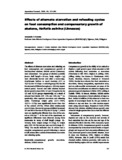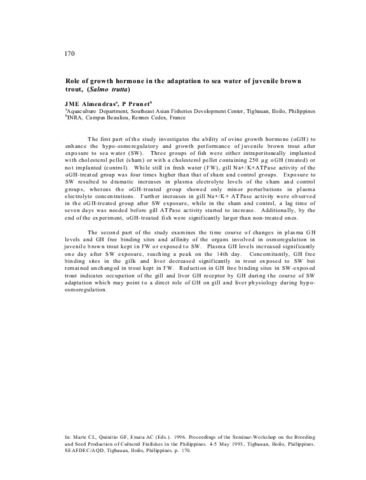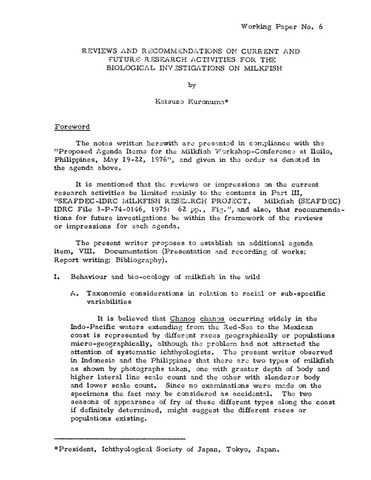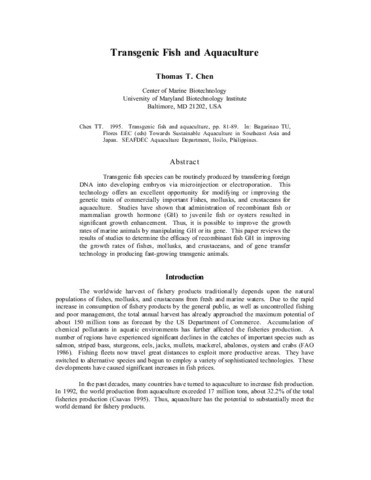Effects of alternate starvation and refeeding cycles on food consumption and compensatory growth of abalone, Haliotis asinina (Linnaeus).

Lihat/
Tarikh
2002Pengarang
Page views
726Metadata
Lihat penerbitan penuhCited times in Scopus
Share
abstrak
The effects of alternate starvation and refeeding on food consumption and compensatory growth of hatchery-bred abalone, Haliotis asinina (Linnaeus), were determined. Two groups of abalone juveniles (mean shell length = 29 mm, body weight = 5 g) were alternately starved and refed a macro-alga, Gracilariopsis bailinae at equal duration (5/5 or 10/10) over 140 days. A control group (FR) was fed the seaweed ad libitum throughout a 200-day experimental period. Starved and refed abalone showed slower growth rates (DGR, 63 and 70 mg/day in the 5/5 and 10/10 groups respectively), as a result of reduced food intake (DFI 15% and 16% day−1 respectively), after repeated starvation and refeeding cycles. Percentage weight gains (5/5 = 196%, 10/10 = 177%) were significantly lower than that of the control (397%). When refed continuously over 60 days, the starved groups exhibited increased DFI and fed at the rate of 24% and 25% day−1, which were not significantly different from that of the control at 26% day−1. At the end of the experiment, no significant differences were observed among three treatments in terms of shell length (range: 46–48 mm), body weight (range 25–28 g), % weight gain (392–465%) and per cent survival (range 87–98%). The results indicated that H. asinina had a complete compensatory growth following a return to full rations after a series of intermittent starvation and refeeding cycles.
Suggested Citation
Fermin, A. C. (2002). Effects of alternate starvation and refeeding cycles on food consumption and compensatory growth of abalone, Haliotis asinina (Linnaeus). Aquaculture Research , 33(3), 197-202. https://doi.org/10.1046/j.1365-2109.2002.00656.x
Subjek
Koleksi
- AQD Journal Articles [1249]
Related items
Showing items related by title, author, creator and subject.
-
Role of growth hormone in the adaptation to sea water of juveline brown trout, (Salmo trutta)
Almendras, J. M. E.; Punet, P. (Aquaculture Department, Southeast Asian Fisheries Development Center, 1996)The first part of the study investigates the ability of ovine growth hormone (oGH) to enhance the hypo-osmoregulatory and growth performance of juvenile brown trout after exposure to sea water (SW). Three groups of fish ... -
Reviews and recommendations on current and future research activities for the biological investigations on milkfish
Kuronuma, Katsuzo (Aquaculture Department, Southeast Asian Fisheries Development Center, 1976)Presented in this paper are the recommendations on current and future research activities for the biological investigations on milkfish (Chanos chanos). Included were the bahavior and bio-ecology of milkfish in the wild. ... -
Transgenic fish and aquaculture
Chen, Thomas T. (Aquaculture Department, Southeast Asian Fisheries Development Center, 1995)Transgenic fish species can be routinely produced by transferring foreign DNA into developing embryos via microinjection or electroporation. This technology offers an excellent opportunity for modifying or improving the ...



